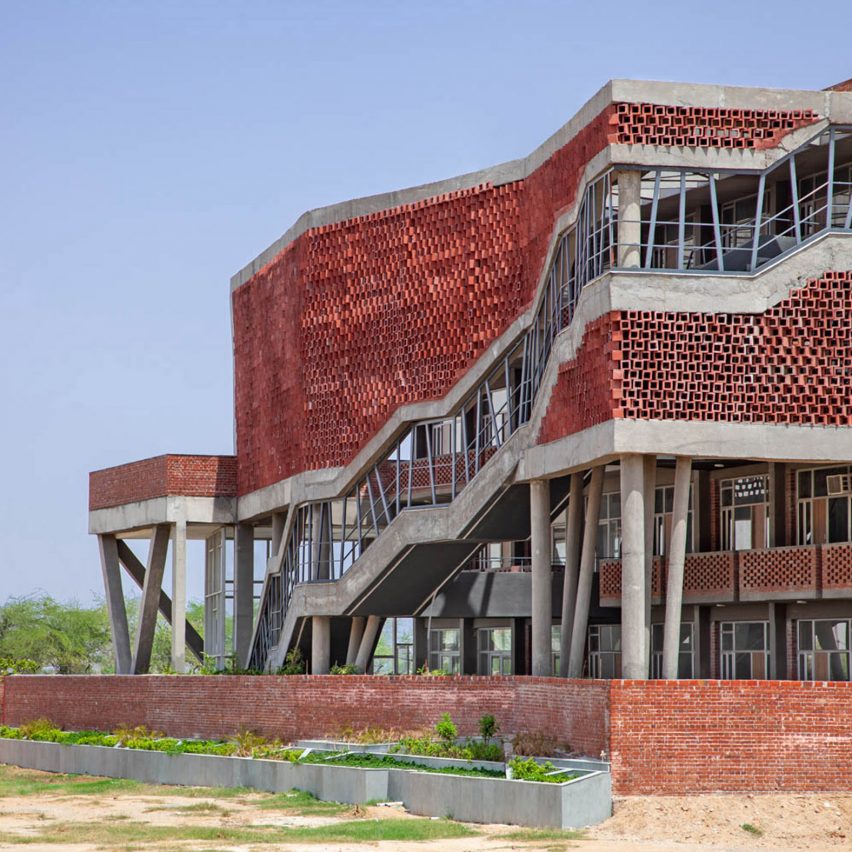
New Delhi-based design studio Zero Energy Design Lab has completed a girls' hostel building with a perforated concrete facade and an exterior staircase in Gurugram, India.
The design for the Girls' Hostel Block, part of the St. Andrews Institute of Technology and Management, took its cues from the adjacent boys' hostel block and features the same material palette of concrete and brick, while a diagonal staircase adds interest to the facade.
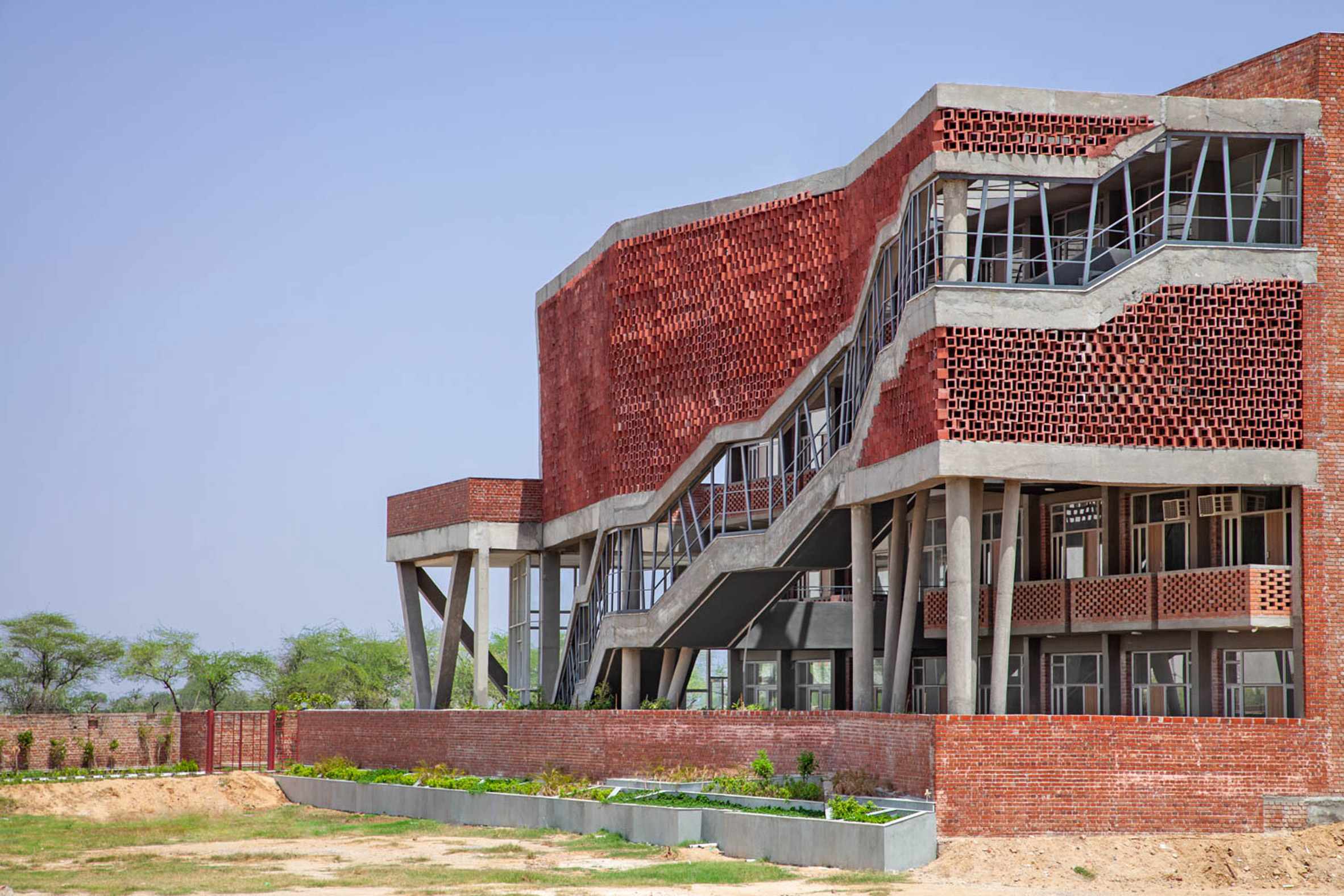
Zero Energy Design Lab (ZED Lab) used hollow concrete blocks in a red-brick colour for the exterior of the 25,000-square-foot building, which can house 130 students in its dorms across four levels.
Its grey concrete structure has been left exposed to create a decorative contrast with the red blocks. Concrete columns are placed in a "tripod-like configuration" to provide structural stability.
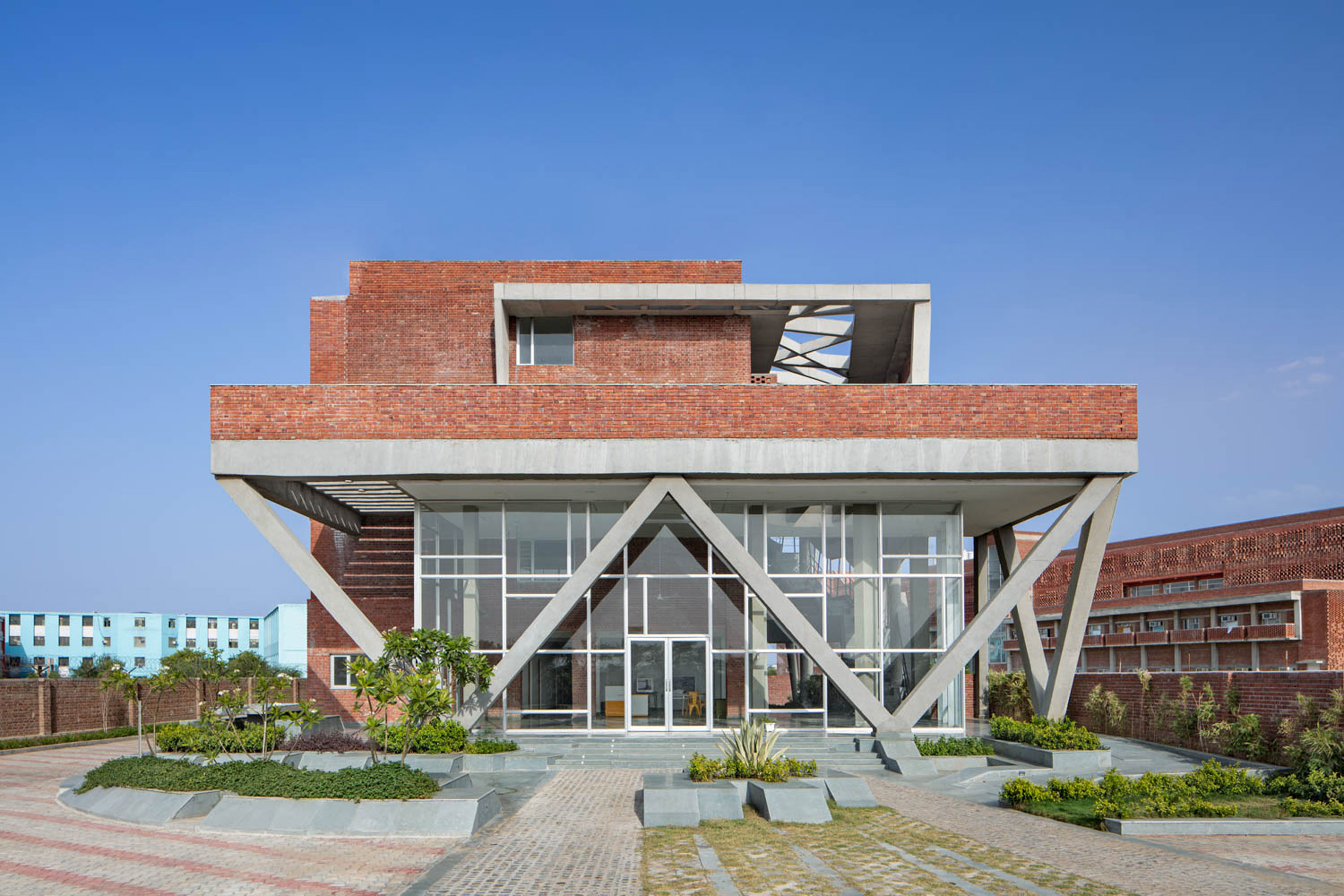
The studio, which specialises in net-zero energy buildings, used parametrical design tools to create a facade in two layers that would suit the climate in Gurugram, where the temperature can reach nearly 40 degrees Celsius.
"With limited space available along the northern façade of the hostel, we thought that a double-skin facade would be ideal in addressing concerns of thermal comfort in response to the hot and dry climate of the region," ZED Lab founder Sachin Rastogi told Dezeen.

"The construction of such a dynamic facade that required each brick to be rotated at a specific angle to block solar radiations created the need for extensive research and design iterations," he added.
The two layers help keep the building cool and create shaded spaces inside.
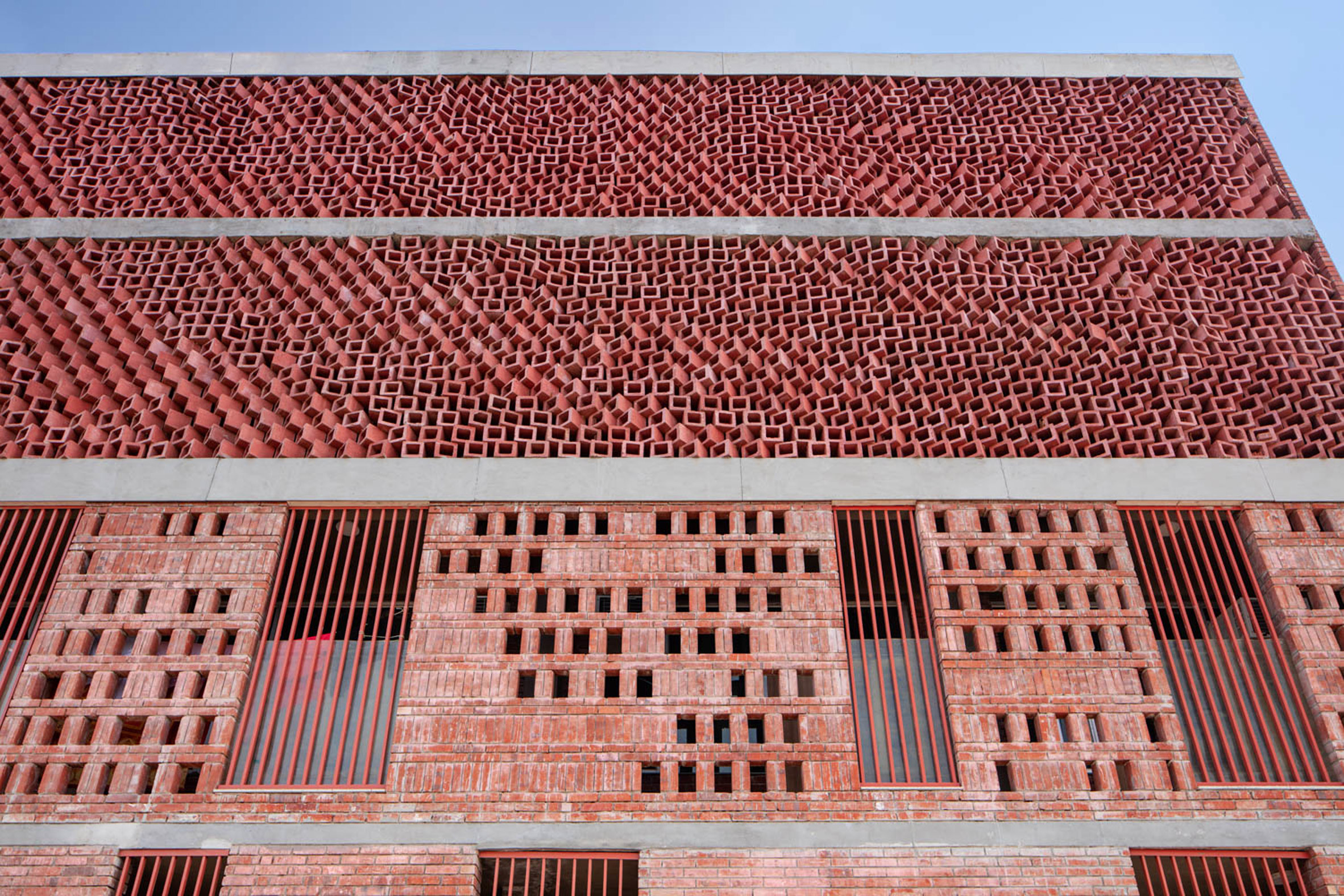
"The exterior first skin manifests as a screen that blocks out the solar radiation directly incident on the building," Rastogi explained.
"While the second skin takes on the role of a breakout space such as a terrace, between the interior and exterior."
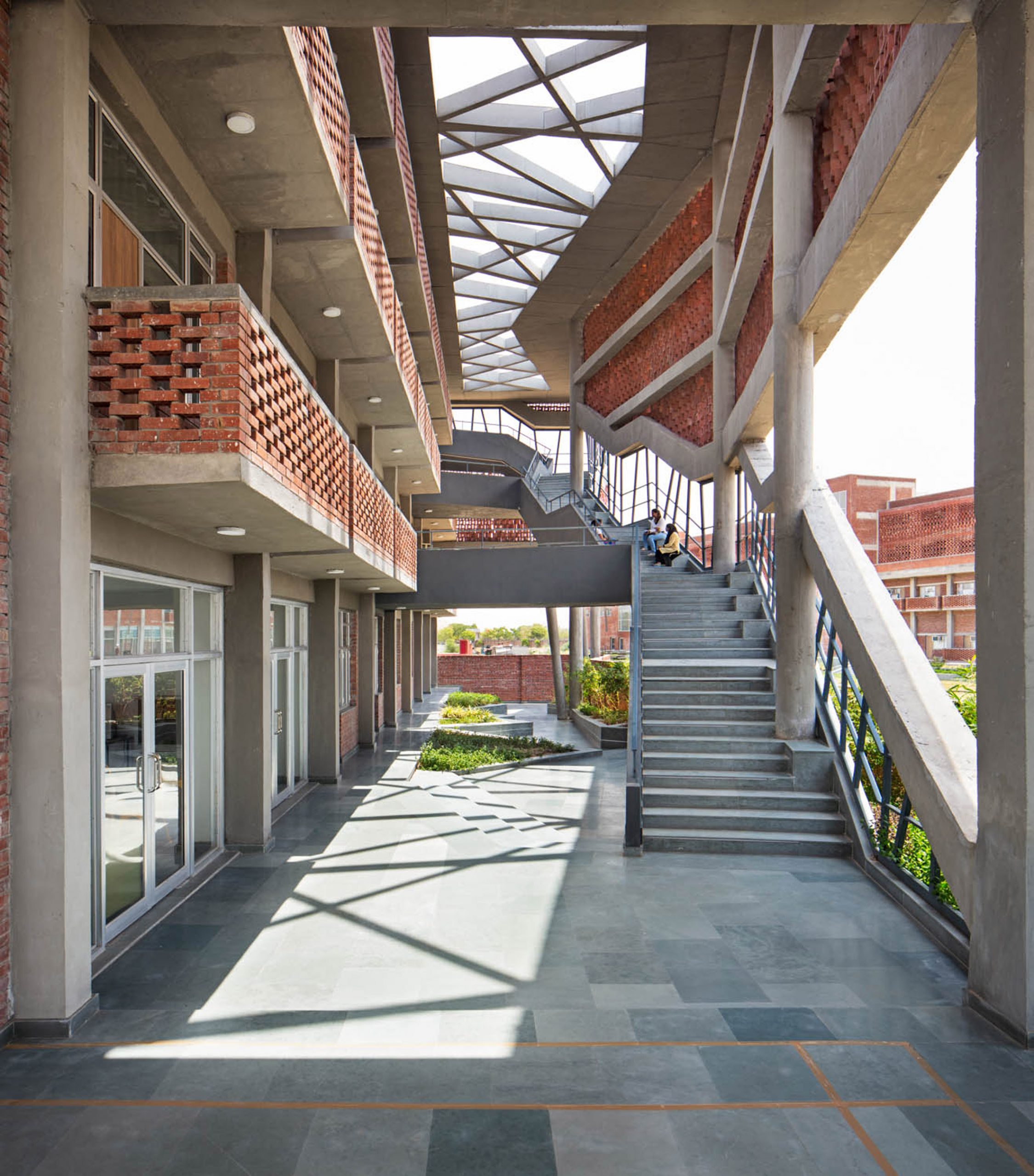
"Since the blocks are permeable, the air volume passing through this mass loses its heat through compression on the basis of Bernoulli’s principle," Rastogi said.
This helps minimise heat gain within the spaces behind the first layer of the facade, and has reduced mechanical cooling loads by 35 per cent, according to the studio.
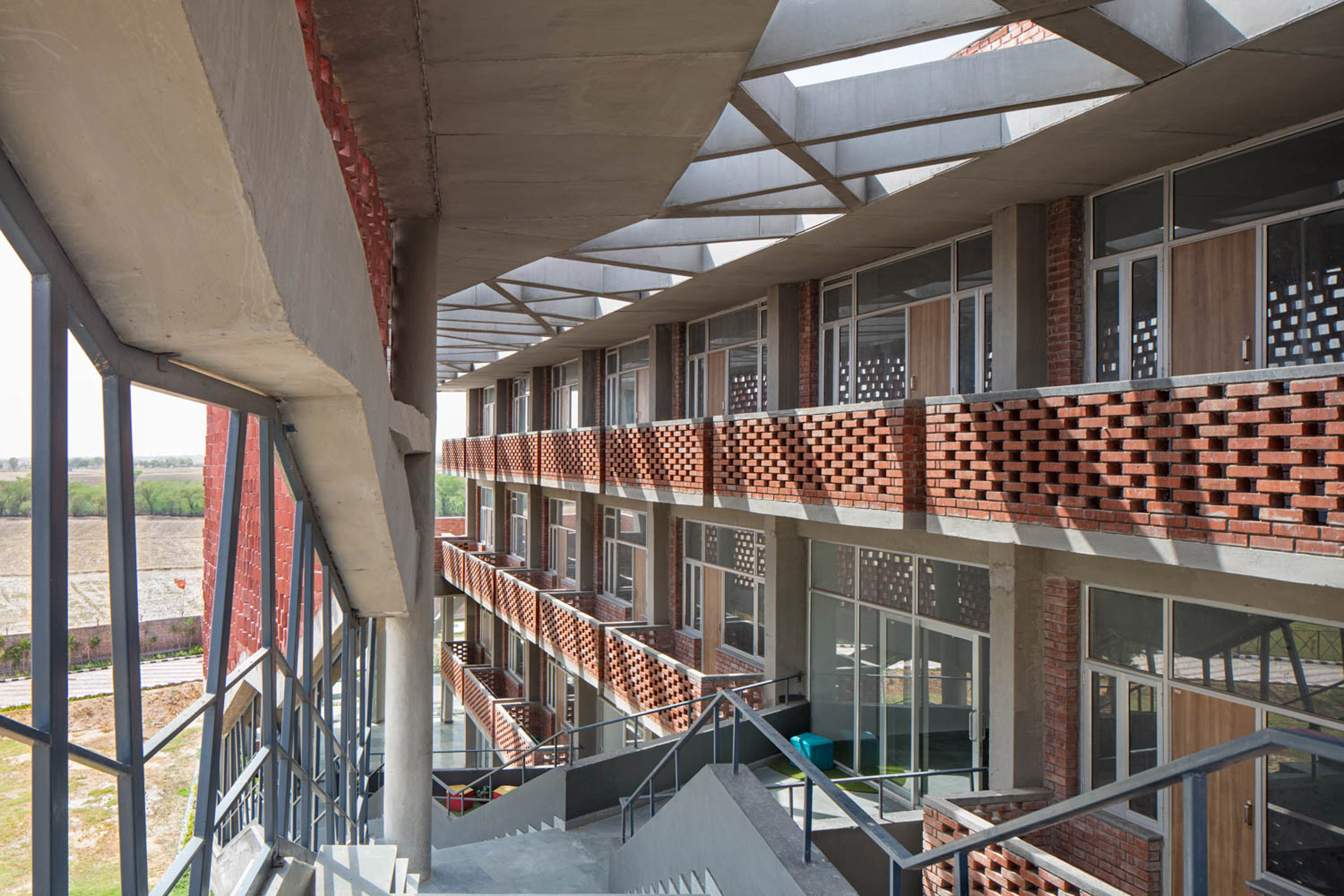
ZED Lab also added greenery to the interior behind the outer facade to create "a cool micro-climate through the effects of evaporative cooling and shading, lowering the demand on mechanical ventilation, thus conserving energy," Rastogi said.
The building "strives to be zero-energy by using passive cooling techniques," the studio added.
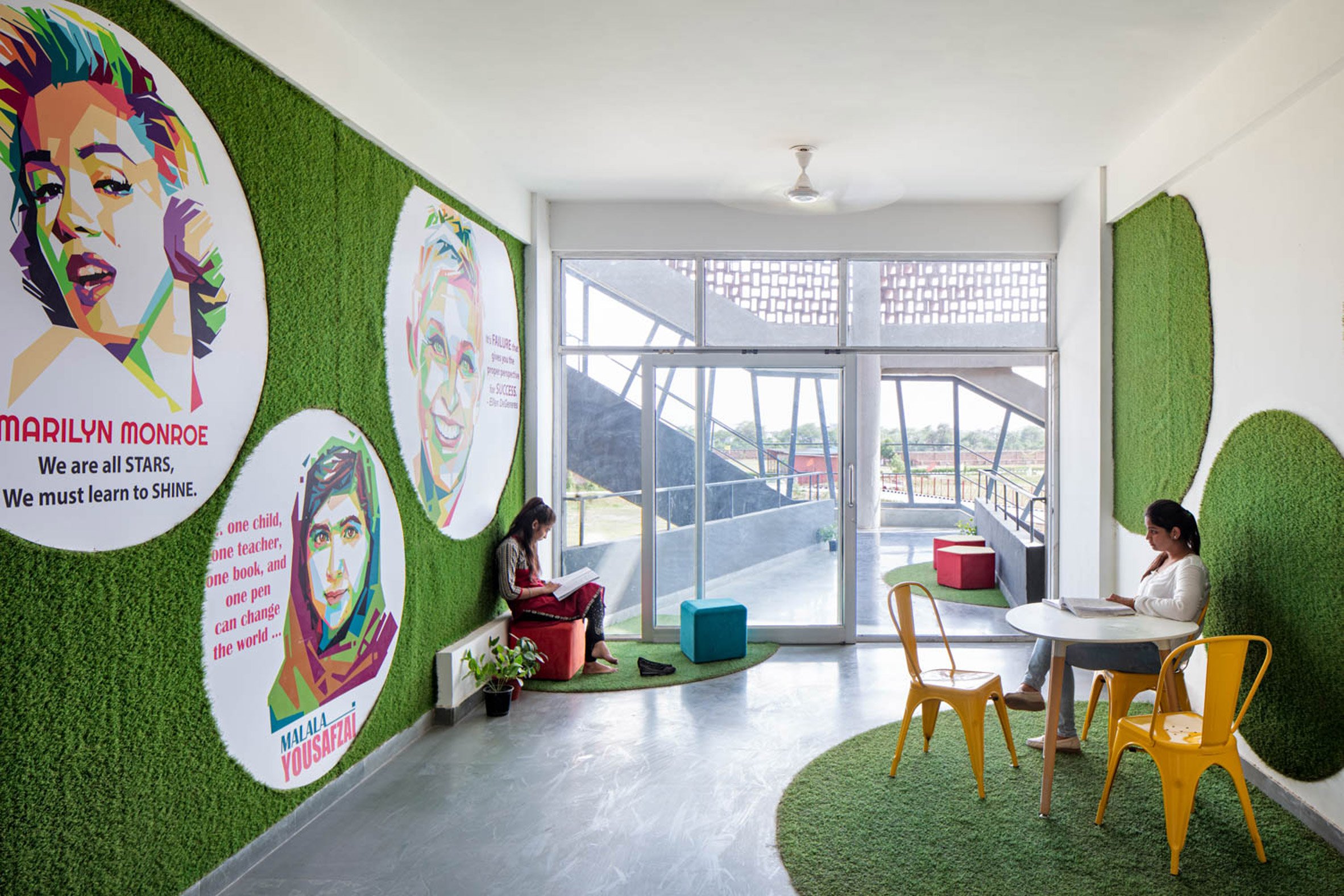
Inside the Girls' Hostel Block, the studio created an interior lounge at the building's core which open onto the staircase, as well as bridges, corridors and smaller lounges.
"The building unfolds as a series of multidimensional spaces, arranged in a hierarchical order through the method of adaptive layering," Rastogi explained.
"Each space is conceptualised as an intimate environment that prioritises both functionality and human comfort."
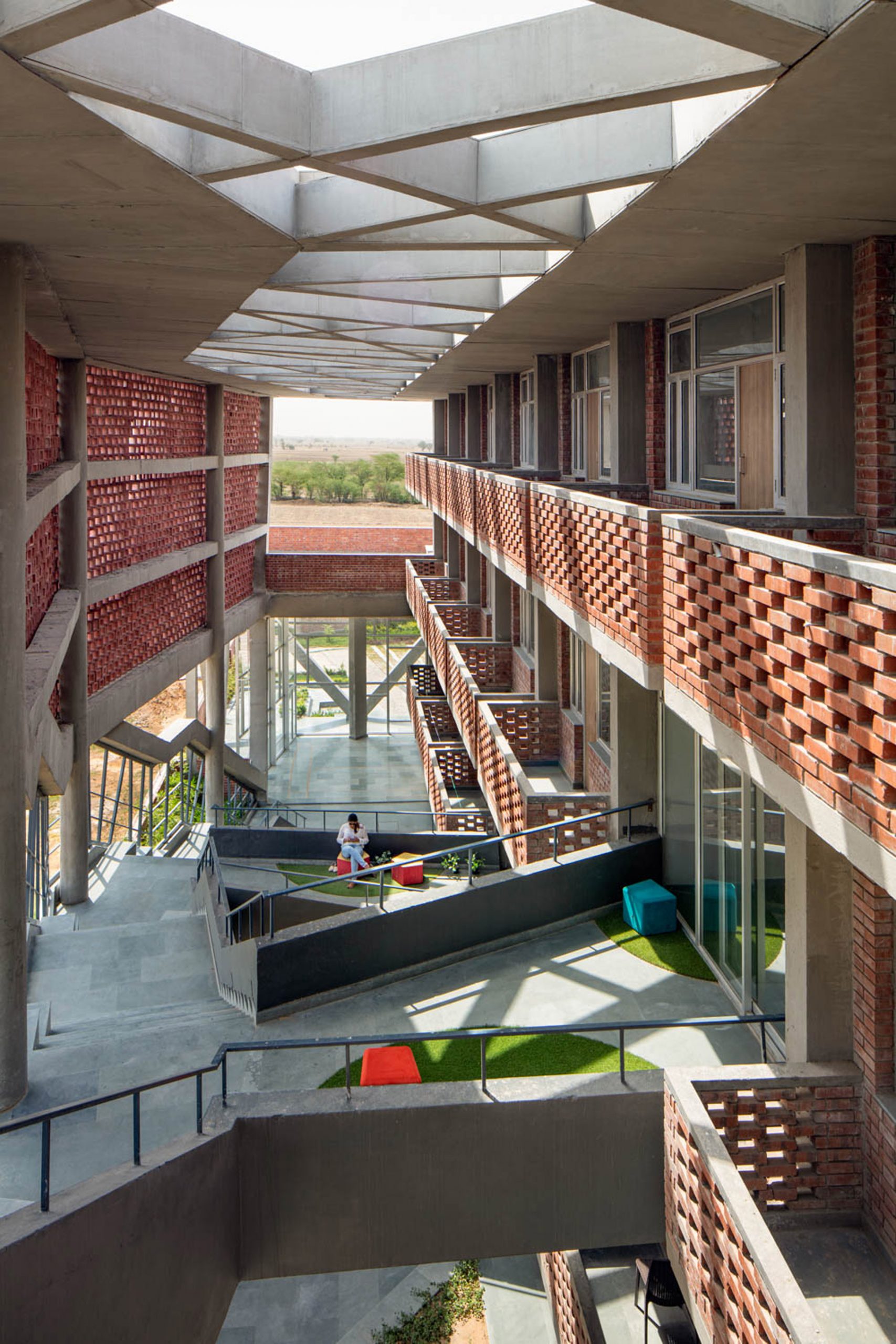
A second-floor terrace along the building's western facade functions as an all-day social space in winter, and both the main staircase and the lobby are used for social gatherings.
"The exterior lobby area often serves as a badminton court in the evenings and the courtyard hosts gaming spaces for chess and carom," Rastogi said.
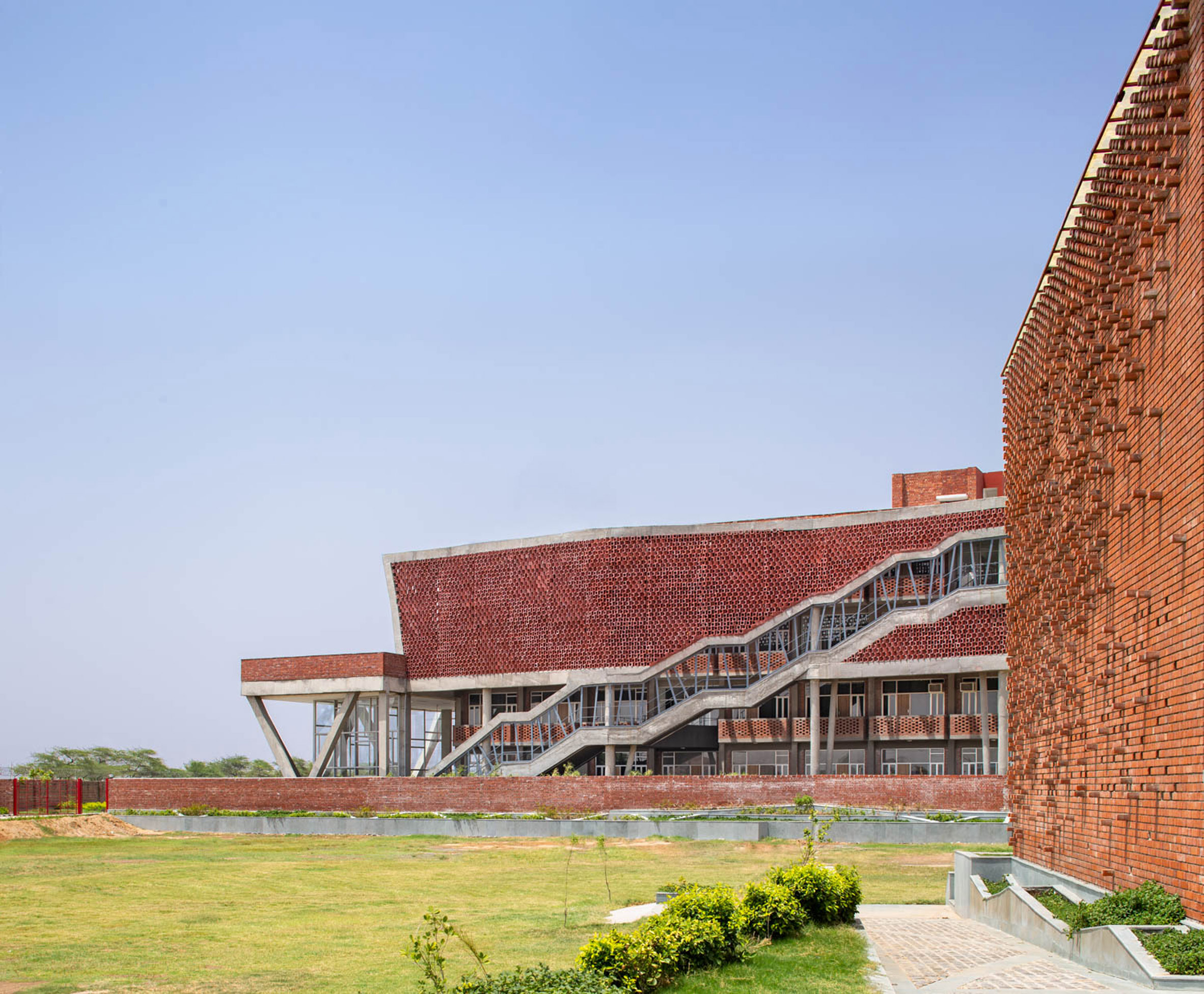
Girls' Hostel Block also nods to traditional Indian architecture, which was constructed in response to different regions' climate conditions and often used similar solutions to today's zero-energy buildings.
"Aangans, or courtyards, have always been a defining feature of Indian architecture, facilitating air circulation and bringing light into the interior spaces," said Rastogi.
"Similarly, thick walls were constructed to act as thermal buffers and reduce heat gain through the building envelope. These features remind us that we need only look to our past to create design frameworks for our present and future needs."
As well as the dorm rooms for the students, Girls' Hostel Block also holds ancillary spaces including a pantry and recreational areas.
A number of recent projects in India have focused on low-carbon design and ways in which architecture can help keep buildings cool naturally.
Architecture firms Nordic Office of Architecture, Grimshaw, Haptic and consultants STUP recently shared their design for the carbon-neutral Delhi Noida International Airport, while the Rajasthan School features angled walls that deflect the sun.
Photography is by Andre J. Fathome at Studio Noughts and Crosses.
The post Zero Energy Design Lab creates Girls' Hostel Block with hollow concrete facade appeared first on Dezeen.
from Dezeen https://ift.tt/39pe287
No comments:
Post a Comment